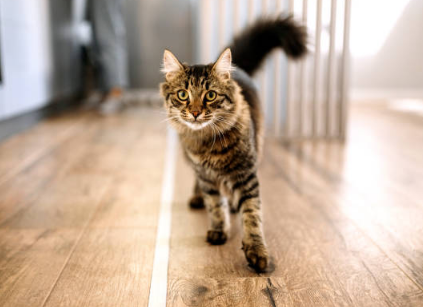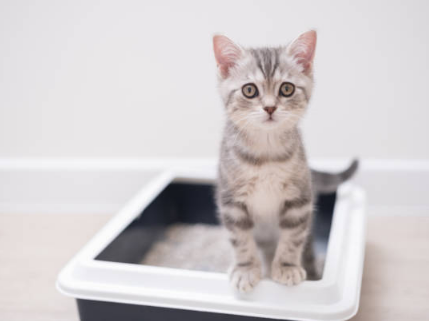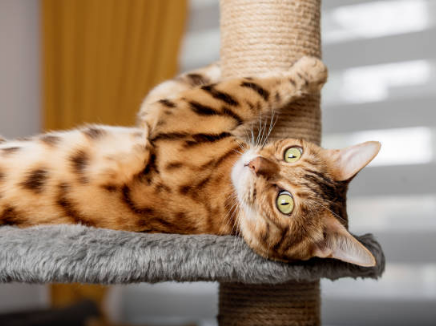Trash-trained cats may be trained to do their own thing in the litter, but if your cat poops outside the litter and on your carpet, that’s a sign of improper bowel movement. The litter box problem is one of the most common behavioral problems for cat owners, and this frustrating behavior can be difficult for cat owners to manage.
The key to solving the problem is to figure out why your cat will poop in inappropriate places, such as your best carpet. Learn why cats tend to defecate on carpet and how to address this behavioral problem.

Why Do Cats Poop on Carpet?
In all parts of the home, carpets seem to be a popular target for inappropriate elimination. There is something about this fabric that attracts cats. Maybe it’s because the carpet is as easy to knead and scratch as garbage, or maybe it’s because of its smell. Absorption rate may also be a factor. You may never be able to determine why your cat seems to prefer carpets, but many cat owners have reported the same problem.
Cats tend to be mysterious, so getting to the bottom of the problem requires careful observation. You need to eliminate one potential cause at a time.
Causes of Cats Pooping on Carpet
No matter where your cat poops, if it’s outside the litter box, there are some possible explanations.
Medical Problems
Before you think that inappropriate excretion is a behavioral issue, it is important to make an assessment of your cat’s health. During the exam, your veterinarian will discuss the cat’s behavior with you and ask if there are any other signs, such as vomiting, diarrhea, changes in appetite, or lethargy. The veterinarian will thoroughly examine your cat for signs of health problems. Laboratory tests and/or radiography (X-rays) may also be recommended.
Something as simple as constipation can cause a cat to defecate on the carpet or in other inappropriate places. For example, your cat suddenly has the urge to urinate, but he may not be able to reach the litter box in time.
Pain or discomfort can also be the cause of improper bowel movements. Perhaps your cat is having trouble getting in and out of the litter box and won’t defecate until it’s no longer pooping. Perhaps the position that cats find most comfortable in is easier to achieve on a living room rug. Your veterinarian may spot conditions such as arthritis and provide a treatment to make your cat more comfortable.
Be aware that older cats may develop dementia. This can affect the cat’s habits and even cause it to “forget” years of training. Your veterinarian may also recommend medications or supplements to help with the condition.
Behavioral Causes
Once a health problem has been ruled out, it’s time to consider behavioral causes. There are a few reasons why your cat’s habits may change suddenly.
- Undesirable litter box: Maybe your cat doesn’t like the size, style, or location of the litter box. Or maybe he doesn’t like the cat litter you use. Many cats don’t like the litter box because it’s not clean. Is your litter box clean enough for your fussy cat?
- Environmental Stress: Have you recently moved? Have a new pet or person in the house? Even small changes like schedules can be stressful for cats.
- Territory marking: If you’ve recently brought another cat home, your cat may try to mark its territory by pooping on the carpet. Marking with urine is more common, but some cats use poop instead.

How to Stop Inappropriate Bowel Movements
Once your cat starts pooping outside the litter box, it can be difficult to break the habit. There are several steps you need to take to break this bad habit, and you need to religiously keep up with your cat to stop this behavior.
Clean up the Evidence
First make sure to thoroughly clean the area where the cat is defecating. If you are unable to make the area clean enough, your cat will continue to be attracted to the location. Wash everything that can be put in the washing machine. If your cat poops on a bath mat or cheap rug, you may just need to throw these things away. For best results, use a high-quality enzymatic cleaner to clean your pet’s mess.
Re-Evaluate the Bins
Cats want to use an ultra-clean litter box and tend to prefer a spacious open litter box. Try using a giant dumpster without a lid instead. You might even consider turning the large plastic storage bin under the bed into an extra-large temporary bin. If you only have one bin, add a second bin in the other area. Consider placing the second box near the place where the cat is not pooping properly. If you have more than one cat, you may need to add more litter boxes. A good general rule of thumb is that there should be one more litter box in the house than there are cats. There should be a dumpster on every floor of the home.
Think About Garbage
If you use scented cat litter, switch to unscented litter immediately. While humans may prefer scented cat litter to mask the smell, many cats find artificial scents unacceptable and disgusting. Keep in mind that your cat’s nose is much more sensitive than yours. Your cat may not like the texture of cat litter either. Use the new type of cat litter in the second box and see if your cat likes it. Consider the size of the litter particles and whether the litter is agglomerated or not.

Training Work
Your cat may need to take a refresher course on litter box training, especially if the cat is young or has recently been adopted.
Prevent Your Cat from Using Inappropriate Areas
If your cat is trying to defecate in a few specific places, try to make these areas as unattractive as possible. Drop the aluminum foil or double-sided tape until your cat stops trying to approach these areas. Do your best to make the dumpster the most attractive option.
Reduce Family Stress
If you have a new cat in the house, be sure to introduce both of them correctly. If it’s another animal or even a human, you may need to gradually make your cat insensitive to stressors. Make sure your cat has a safe shelter if they need it. Also, make sure there is enough space so that food bowls and bins don’t come next to each other.
Improve Your Cat’s Environment and Play with Your Cat Every Day
Learn a wealth of feline knowledge to enrich your cat’s world. Consider adding vertical space, such as a cat tree or ledge, to give your cat more places to go. Try to keep interactive toys with you when you’re out and about. Play with your cat as much as you can. A frustrated, bored cat is more likely to show it.
Be Patient and Consistent
Change doesn’t happen overnight, so don’t be stressed. Just make an effort to clean the dirty area, keep the litter box clean and beautiful, and maintain a happy and fun environment for your cat.
Contact Your Veterinarian
If the situation doesn’t improve and you’ve reached your limit, don’t give up. Ask your veterinarian for a referral to a veterinary behaviorist or an applied animal behaviorist. There are expert trade-offs that are worth the investment.